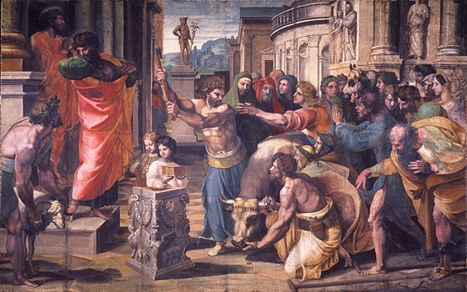I’ve heard horror stories about folks that go out and do a “mission” project somewhere and they come back all excited and their Pastor throws a wet blanket on them by declaring that since they were not called or ordained, they were not on a “mission” trip and they were not missionaries. There are some real practical implications for a definition used by our church as to who and what a “missionary” is. Recently Dr. Al Collver wrote a little paper explaining what a missionary is in terms of the sending agency of the LCMS which is the Board for International Missions. I’ve been waiting to share this so here it is –
Who Is A Missionary?
Rev. Dr. Albert Collver, Director of Church Relations
Who is a missionary? It seems at first glance to be a simple question to answer. Yet upon more thought, the answer becomes more difficult. One of the dictionary definitions of a missionary is “a person who undertakes a mission”—not the most helpful of definitions. While there are some secular usages of the term, the word “missionary” is most frequently associated with the work of Christians in spreading the Gospel of Jesus. In a sense, every Christian is a missionary in their vocation, but there is a more specialized usage that the church generally recognizes. The word “missionary” first appeared in English around the 17th century. It comes from the Latin missio which means “to send.” Missio is a translation of the Greek apostéllō, from which we get the word “apostle.” The Apostles were sent out by Jesus. One of the keys to understanding both the Biblical and churchly use of “missionary” is that it is a person under orders and sent out by the Lord through the church.
In The Lutheran Church—Missouri Synod, the 2010 Handbook refers to missionaries as “ordained” or “commissioned.” (2010 Handbook, Bylaw 4.4.3b, pg. 193.) This would seem to imply that “missionaries” of The Lutheran Church—Missouri Synod are either pastors or teachers. Indeed, since the beginning of the Synod’s foreign mission work at the very end of the 19th century, both pastors and teachers were the primary workers sent into the mission field. This is appropriate as the Witness (Martyria) task of the church in a public way is carried out by pastors through preaching and teaching, and in other pastoral care settings. Teachers who provide religious instruction and an example of the Christian life to their students also carry it out. The establishment of Lutheran schools on the mission field has assisted and supported the church’s task of Witness (Martyria). However, even in the early days of the Synod’s foreign mission work, the people “sent” were not limited to pastors and teachers, but included other professionals who provided assistance and support to the work done by the pastors and teachers.
For instance, in the Synod’s mission work to India (1890s) and Nigeria (1930s) the pastors and teachers who were sent quickly saw the need to show Mercy (Diakonia) to the people they were serving. Within a year of arrival, the pastors in Nigeria requested the services of a physician and a nurse to provide care for the body. In India, the missionaries established hospitals that are still in use today! Just as the Lord Jesus cared for the body by feeding and healing, so, too, does His Church. Yet these physicians and nurses sent to the mission field were not necessarily ordained or commissioned. Nonetheless, the church considered them missionaries because they were sent with the authorization of the church to support the Witness (Martyria) of the church by providing Mercy (Diakonia). The care of the body also provided the physicians and nurses the opportunity to share the faith with others as they carried out their primary task of Mercy (Diakonia).
With the development of modern jet aircraft in the 1960s and a greater discretionary income, it became easier for people to travel to once distant lands. This development afforded the possibility of incorporating other people onto the mission field who could further support the work of gospel proclamation. To alleviate the missionaries (now pastors, teachers, doctors and nurses) of the burden of financial matters and administration, business managers were sent onto the field to support the work of the church’s Witness (Martyria) and Mercy (Diakonia). Eventually, other needs and opportunities presented themselves, such as the desire for instruction in the English language. While not always a direct witness to the Gospel, teaching English as a Foreign Language with Christian materials permitted the opportunity to enter otherwise closed countries. In some cases, this allowed for the later formation of a church in a closed country. It also provided the opportunity for nearly any English-speaking Lutheran to serve overseas. Once again, the teaching of English is in service to the church’s Witness (Martyria), and not a replacement. Again, a mark of distinction for these other workers is that they were sent by the church.
So back to the question, “Who is a missionary?” The key is that missionaries are sent by the Lord through the mediation of His Church. While the names and position titles have changed over the years, this is how the church has always done mission, even back to the time of the Apostles when Saint Paul first brought along Luke as a physician. A missionary for The Lutheran Church—Missouri Synod is a person called, that is, ordained or commissioned, or appointed (medical personnel, business, administrative, or other worker) by the appropriate sending agency (the Board for International Mission) who is sent to bear Witness (Martyria) to the Gospel of Jesus, to show Mercy (Diakonia), or to support those who do as we have a Life Together (koinonia).


